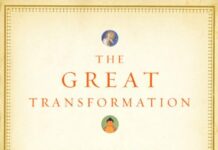
Ebook Info
- Published: 2004
- Number of pages: 240 pages
- Format: EPUB
- File Size: 0.45 MB
- Authors: Karen Armstrong
Description
With such bestsellers as A History of God and Islam, Karen Armstrong has consistently delivered “penetrating, readable, and prescient” (The New York Times) works that have lucidly engaged a wide range of religions and religious issues. In Buddha she turns to a figure whose thought is still reverberating throughout the world 2,500 years after his death.Many know the Buddha only from seeing countless serene, iconic images. But what of the man himself and the world he lived in? What did he actually do in his roughly eighty years on earth that spawned one of the greatest religions in world history? Armstrong tackles these questions and more by examining the life and times of the Buddha in this engrossing philosophical biography. Against the tumultuous cultural background of his world, she blends history, philosophy, mythology, and biography to create a compelling and illuminating portrait of a man whose awakening continues to inspire millions.
User’s Reviews
Editorial Reviews: Review [Armstrong] offers a frequently inspiring look at this exemplary life… Invaluable. (Los Angeles Times) About the Author Karen Armstrong’s books include The Battle for God, A History of God: The 4000-Year Quest of Judaism, Christianity, and Islam; Jerusalem: One City, Three Faiths; and In the Beginning: A New Interpretation of Genesis. A former Roman Catholic nun, she teaches at Leo Baeck College for the Study of Judaism and received the 1999 Muslim Public Affairs Council Media Award. Excerpt. © Reprinted by permission. All rights reserved. Renunciation (Chapter 1)One night toward the end of the sixth century B.C.E., a young man called Siddhatta Gotama walked out of his comfortable home in Kapilavatthu in the foothills of the Himalayas and took to the road.1 We are told that he was twenty-nine years old. His father was one of the leading men of Kapilavatthu and had surrounded Gotama with every pleasure he could desire; he had a wife and a son who was only a few days old, but Gotama had felt no pleasure when the child was born. He had called the little boy Rahula, or “fetter”: the baby, he believed, would shackle him to a way of life that had become abhorrent.2 He had a yearning for an existence that was “wide open” and as “complete and pure as a polished shell,” but even though his father’s house was elegant and refined, Gotama found it constricting, “crowded” and “dusty.” A miasma of petty tasks and pointless duties sullied everything. Increasingly he had found himself longing for a lifestyle that had nothing to do with domesticity, and which the ascetics of India called “homelessness.”3 The thick luxuriant forests that fringed the fertile plain of the Ganges river had become the haunt of thousands of men and even a few women who had all shunned their families in order to seek what they called “the holy life” (brahmacariya), and Gotama had made up his mind to join them.It was a romantic decision, but it caused great pain to the people he loved. Gotama’s parents, he recalled later, wept as they watched their cherished son put on the yellow robe that had become the uniform of the ascetics and shave his head and beard.4 But we are also told that before he left, Sidhatta stole upstairs, took one last look at his sleeping wife and son, and crept away without saying goodbye.5 It is almost as though he did not trust himself to hold true to his resolve should his wife beg him to stay. And this was the nub of the problem, since, like many of the forest-monks, he was convinced that it was his attachment to things and people which bound him to an existence that seemed mired in pain and sorrow. Some of the monks used to compare this kind of passion and craving for perishable things to a “dust” which weighed the soul down and prevented it from soaring to the pinnacle of the universe. This may have been what Siddhatta meant when he described his home as “dusty.” His father’s house was not dirty, but it was filled with people who pulled at his heart and with objects that he treasured. If he wanted to live in holiness, he had to cut these fetters and break free. Right from the start, Siddhatta Gotama took it for granted that family life was incompatible with the highest forms of spirituality. It was a perception shared not only by the other ascetics of India, but also by Jesus, who would later tell potential disciples that they must leave their wives and children and abandon their aged relatives if they wanted to follow him.6Gotama would not, therefore, have agreed with our current cult of “family values.” Nor would some of his contemporaries or near-contemporaries in other parts of the world, such as Confucius (551-479) and Socrates (469-399), who were certainly not family-minded men, but who would, like Gotama himself, become key figures in the spiritual and philosophical development of humanity during this period. Why this rejectionism? The later Buddhist scriptures would evolve elaborate mythological accounts of Gotama’s renunciation of domesticity and his “Going Forth” into homelessness, and we shall consider these later in this chapter. But the earlier texts of the Pali Canon give a starker version of the young man’s decision. When he looked at human life, Gotama could see only a grim cycle of suffering, which began with the trauma of birth and proceeded inexorably to “aging, illness, death, sorrow and corruption.”7 He himself was no exception to this universal rule. At present he was young, healthy and handsome, but whenever he reflected on the suffering that lay ahead, all the joy and confidence of youth drained out of him. His luxurious lifestyle seemed meaningless and trivial. He could not afford to feel “revolted” when he saw a decrepit old man or somebody who was disfigured by a loathsome illness. The same fate-or something even worse-would befall him and everybody he loved.8 His parents, his wife, his baby son and his friends were equally frail and vulnerable. When he clung to them and yearned tenderly toward them, he was investing emotion in what could only bring him pain. His wife would lose her beauty, and little Rahula could die tomorrow. To seek happiness in mortal, transitory things was not only irrational: the suffering in store for his loved ones as well as for himself cast a dark shadow over the present and took away all his joy in these relationships.But why did Gotama see the world in such bleak terms? Mortality is a fact of life that is hard to bear. Human beings are the only animals who have to live with the knowledge that they will die one day, and they have always found this vision of extinction difficult to contemplate. But most of us manage to find some solace in the happiness and affection that is also part of the human experience. Some people simply bury their heads in the sand and refuse to think about the sorrow of the world, but this is an unwise course, because, if we are entirely unprepared, the tragedy of life can be devastating. From the very earliest times, men and women devised religions to help them cultivate a sense that our existence has some ultimate meaning and value, despite the dispiriting evidence to the contrary. But sometimes the myths and practices of faith seem incredible. People then turn to other methods of transcending the sufferings and frustrations of daily life: to art, music, sex, drugs, sport or philosophy. We are beings who fall very easily into despair, and we have to work very hard to create within ourselves a conviction that life is good, even though all around us we see pain, cruelty, sickness and injustice. When he decided to leave home, Gotama, one might think, appeared to have lost this ability to live with the unpalatable facts of life and to have fallen prey to a profound depression.Yet that was not the case. Gotama had indeed become disenchanted with domestic life in an ordinary Indian household, but he had not lost hope in life itself. Far from it. He was convinced that there was a solution to the puzzle of existence, and that he could find it. Gotama subscribed to what has been called the “perennial philosophy,” because it was common to all peoples in all cultures in the premodern world.9 Earthly life was obviously fragile and overshadowed by death, but it did not constitute the whole of reality. Everything in the mundane world had, it was thought, its more powerful, positive replica in the divine realm. All that we experienced here below was modeled on an archetype in the celestial sphere; the world of the gods was the original pattern of which human realities were only a pale shadow. This perception informed the mythology, ritual and social organizations of most of the cultures of antiquity and continues to influence more traditional societies in our own day. It is a perspective that is difficult for us to appreciate in the modern world, because it cannot be proved empirically and lacks the rational underpinning which we regard as essential to truth. But the myth does express our inchoate sense that life is incomplete and that this cannot be all there is; there must be something better, fuller and more satisfying elsewhere. After an intense and eagerly awaited occasion, we often feel that we have missed something that remains just outside our grasp. Gotama shared this conviction, but with an important difference. He did not believe that this “something else” was confined to the divine world of the gods; he was convinced that he could make it a demonstrable reality in this mortal world of suffering, grief and pain.Thus, he reasoned to himself, if there was “birth, aging, illness, death, sorrow and corruption” in our lives, these sufferings states must have their positive counterparts; there must be another mode of existence, therefore, and it was up to him to find it. “Suppose,” he said, “I start to look for the unborn, the unaging, unailing, deathless, sorrowless, incorrupt and supreme freedom from this bondage?” He called this wholly satisfactory state Nibbana (“blowing out”).10 Gotama was convinced that it was possible to “extinguish” the passions, attachments and delusions that cause human beings so much pain, rather as we snuff out a flame. To attain Nibbana would be similar to the “cooling” we experience after we recover from a fever: in Gotama’s time, the related adjective nibbuta was a term in daily use to describe a convalescent. So Gotama was leaving home to find a cure for the sickness that plagues humanity and which fills men and women with unhappiness. This universal suffering which makes life so frustrating and miserable was not something that we were doomed to bear forever. If our experience of life was currently awry, then, according to the law of archetypes, there must be another form of existence that was not contingent, flawed and transient. “There is something that has not come to birth in the usual way, which has neither been created and which remains undamaged,” Gotama would insist in later life. “If it did not exist, it would be impossible to find a way out.”11A modern person may smile at the naïveté of this optimism, and find the myth of eternal archetypes wholly incredible. But Gotama would claim that he did find a way out and that Nibbana did, therefore, exist. Unlike many religious people, however, he did not regard this panacea as supernatural. He did not rely on divine aid from another world, but was convinced that Nibbana was a state that was entirely natural to human beings and could be experienced by any genuine seeker. Gotama believed that he could find the freedom he sought right in the midst of this imperfect world. Instead of waiting for a message from the gods, he would search within himself for the answer, explore the furthest reaches of his mind, and exploit all his physical resources. He would teach his disciples to do the same, and insisted that nobody must take his teaching on hearsay. They must validate his solutions empirically, in their own experience, and find for themselves that his method really worked. They could expect no help from the gods. Gotama believed that gods existed, but was not much interested in them. Here again, he was a man of his time and culture. The people of India had worshipped gods in the past: Indra, the god of war; Varuna, the guardian of the divine order; Agni, the fire god. But by the sixth century, these deities had begun to recede from the religious consciousness of the most thoughtful people. They were not exactly regarded as worthless, but they had become unsatisfactory as objects of worship. Increasingly, people were aware that the gods could not provide them with real and substantial help. The sacrifices performed in their honor did not in fact alleviate human misery. More and more men and women decided that they must rely entirely on themselves. They believed that the cosmos was ruled by impersonal laws to which even the gods were subject. Gods could not show Gotama the way to Nibbana; he would have to depend upon his own efforts.Nibbana was not, therefore, a place like the Christian Heaven to which a believer would repair after death. Very few people in the ancient world at this point hoped for a blissful immortality. Indeed, by Gotama’s day, the people of India felt imprisoned eternally in their present painful mode of existence, as we can see from the doctrine of reincarnation, which had become widely accepted by the sixth century. It was thought that a man or a woman would be reborn after death into a new state that would be determined by the quality of their actions (kamma) in their present life. Bad kamma would mean that you would be reborn as a slave, an animal or a plant; good kamma would ensure a better existence next time: you could be reborn as a king or even as a god. But rebirth in one of the heavens was not a happy ending, because divinity was no more permanent than any other state. Eventually, even a god would exhaust the good kamma which had divinized him; he would then die and be reborn in a less advantageous position on earth. All beings were, therefore, caught up in an endless cycle of samsara (“keeping going”), which propelled them from one life to another. It sounds like a bizarre theory to an outsider, but it was a serious attempt to address the problem of suffering, and can be seen as inherently more satisfactory than attributing human fate to the frequently erratic decisions of a personalized god, who often seems to ensure that the wicked prosper. The law of kamma was a wholly impersonal mechanism that applied fairly and without discrimination to everybody. But the prospect of living one life after another filled Gotama, like most other people in northern India, with horror.This is perhaps difficult to understand. Today many of us feel that our lives are too short and would love the chance to do it all again. But what preoccupied Gotama and his contemporaries was not so much the possibility of rebirth as the horror of redeath. It was bad enough to have to endure the process of becoming senile or chronically sick and undergoing a frightening, painful death once, but to be forced to go through all this again and again seemed intolerable and utterly pointless. Most of the religious solutions of the day were designed to help people extricate themselves from samsara and achieve a final release. The freedom of Nibbana was inconceivable because it was so far removed from our everyday experience. We have no terms to describe or even to envisage a mode of life in which there is no frustration, sorrow or pain, and which is not conditioned by factors beyond our control. But Indian sages of Gotama’s day were convinced that this liberation was a genuine possibility. Western people often describe Indian thought as negative and nihilistic. Not so. It was breathtakingly optimistic and Gotama shared this hope to the full.When he left his father’s house clad in the yellow robes of a mendicant monk who begged for his food, Gotama believed that he was setting out on an exciting adventure. He felt the lure of the “wide open” road, and the shining, perfect state of “homelessness.” Everybody spoke of the “holy life” at this time as a noble quest. Kings, merchants and wealthy householders alike honored these bhikkhus (“almsmen”) and vied with one another for the privilege of feeding them. Some became their regular patrons and disciples. This was no passing craze. The people of India can be as materialistic as anybody else, but they have a long tradition of venerating those who seek the spiritual, and they continue to support them. Still, there was a special urgency in the Ganges region in the late sixth century B.C.E. People did not regard the renunciants as feeble drop-outs. There was a spiritual crisis in the region. The sort of disillusion and anomie that Gotama had experienced was widespread, and people were desperately aware that they needed a new religious solution. The monk was thus engaged in a quest that would benefit his fellows, often at huge cost to himself. Gotama was often described in heroic imagery, suggesting strength, energy and mastery. He was compared to a lion, a tiger and a fierce elephant. As a young man, he was seen as a “handsome nobleman, capable of leading a crack army or a troop of elephants.”12 People regarded the ascetics as pioneers: they were exploring the realms of the spirit to bring succor to suffering men and women. As a result of the prevailing unrest, many yearned for a Buddha, a man who was “enlightened,” who had “woken up” to the full potential of humanity and would help others to find peace in a world that had suddenly become alien and desolate. Read more
Reviews from Amazon users which were colected at the time this book was published on the website:
⭐This is an energetic work by an elite scholar who has unearthed much material and has exercised her imagination in ways that will reward the reader on every page – I am glad to have it in my collection and will likely use it in a related course in the coming year.
⭐Of all the books I have read on Buddha this short little book does the best job of putting the dharma into focus, clarifies the many aspects of its origin and the various facets of the meditative practices and teachings from the earlier practices learned by Gotama to his complete understanding of enlightenment and how he taught it. It really gives meaning to many things from Goenka who often refers accurately to the early Pali texts. The history and the story are full of interesting passages taken from the earliest writings. In the end though the book is finished, just like the Buddha and everyone else leaving his karma and his work behind. I bought a hard copy for my library. Interesting that an ex Catholic nun did such a great job writing this book. Funny thing is that Gotama originally refused to let women in to the sangha probably due to the complications possible from sexual desire and even refused his step-mother who raised him. But he thought better of it fortunately. It is also interesting to muse that Chairman Mao, whose mother was a devout Buddhist, elevated all women to full social status during the revolution. Was this partly because of Buddha’s teaching and things he learned from his mother? Is the successful communal nature of the Buddhist sangha over thousands of years a model for socialist societies? Could be. Everything is connected.So long, Buddha. Good bye, Buddha. (Haha there was even a Judas in the story.)
⭐I had a tough time deciding between 3 and 4 stars for this book, here’s why:Positive:-The book is written in a very straightforward manner.-The author makes an honest attempt to do what she set out to do, which is cover the historical life of Gotama-I enjoyed certain parts more than others.Negative:-The author does not have much understanding of deeper meditative states, which of course is essential to a deeper understanding of Buddhism. This book is about the Buddha, not Buddhism, but the core of Buddhism _is_ the man who became the Buddha.-The author’s background seems to bias her a little against some of the things attributed to Gotama (and I don’t even mean the more outlandish ones). However, as I said, she does seem to try to overcome that bias and reserves an amount of detached interest.-There simply is not a lot of historical information available to form a biography, as the author herself points out.Overall:In the end this book did give a basic overview of how things are thought to have gone in Gotama’s life. If you were, say, writing a report for school about him, this might be a good book to read through (it’s pretty short too). Or if you’re just curious and want an introduction to the historical figure, again this is a good book. Just know that it’s about the man and not attaining enlightenment (though in some sense, one might say everything is about that). In short, I enjoyed this book enough to have book glad to read it and I’m glad the author seems to have treated the subject to the best of her abilities.
⭐Exploring the life of Buddha requires analyzing the humanity separate but within the framework of the religion that emanated from his teachings. Karen Armstrong writes from a secular view, downplaying legend and looking to provide a humanity to Siddhartha Gautama that is often lost when conflated with the legends. The book itself is not the most engaging read – and I almost 3 starred it. However, the challenge Armstrong took on in the writing of the book overcomes the somewhat dry delivery.
⭐Karen Armstrong writes in a way that makes very difficult and complex teachings clear. Even though there are few historical texts available, to reconstruct a “life of Buddha,” she draws on hints from a huge variety of sources to suggest a plausible biographical path for the development of Buddha’s Dharma. This was the book that helped me to appreciate the monumental importance of Buddha’s teachings and how parts correspond to other world religions both Western and Eastern. She posits that Buddha learned from the Vedas and Upanishads, probably using the practices of Yoga in its nascent form. She puts his teachings in the context of the whole Axial age, citing Jewish Christian and Socratic parallels in the West and Hindu, Confucian, and Taoist parallels in the East to name a few sources. Truly a masterpiece of writing!
⭐While reading this book, I kept waiting for it to take off, so to speak, and I was disappointed that it never did. The content of the book seems to be treated from a distance, and while I understand the subject of the book lived thousands of years ago and it is an autobiographical account, it just felt as though the author was not connected to the words she put on the page. She is clearly a gifted writer, and perhaps I feel underwhelmed by the end result because of that. It seems it could have been a richer, more involving account of the Buddha’s life, but while promising to do so several times, it never really got there.The author has certainly done a lot of research, has battled with the difficulties of trying to conjure up a unified image of a historical figure from a time when it was not common to preserve historical record in written form – and deserves a lot of credit for that. She is also an engaging writer – there are moments especially during the middle of the book, where she explains the core meaning of the Dhamma – and does so quite lucidly and elegantly. Still, I found myself wishing there was more of that elegance and engagement, wishing that the book flowed better than it did, perhaps involving more descriptions and anecdotes from the life of the Buddha – just so I felt I would know who the Buddha was better. The description of the end of the Buddha’s life had a strange quality to it too – it felt like I was not ready for the book to end because I wanted more, but was simultaneously glad that it did because it never quite felt like I was really along for the ride.
⭐This is a very readable book about a figure that has influenced world history. For Buddhists and non-Buddhists is presents the Buddha in the cultural context of his time which is fascinating. It acknowledges the difficulties and tensions created by lack of contemporaneous accounts of his life and teaching reliant as we are on the oral transmission of his works for a long period. The explanations of Buddhist teachings are clear and sensitively presented with occasional reference where appropriate to other world faiths and modern views on gender issues. There are useful reference notes for further reading if wished. I was very impressed with this work and enjoyed reading it.
⭐This book has a lot of things that happened only in the imagination of the author. She is not really versed in buddhism. Her speciallity is Islam and the prophet mohammed.
⭐Another informative and easy to read book by Karen Armstrong. As an introduction or one off read about the Buddha I doubt you could choose a better book. Recommended.
⭐good book for those studying religion or just have an interest in the subject
⭐Very well researched and presented.
Keywords
Free Download Buddha (Penguin Lives Biographies) in EPUB format
Buddha (Penguin Lives Biographies) EPUB Free Download
Download Buddha (Penguin Lives Biographies) 2004 EPUB Free
Buddha (Penguin Lives Biographies) 2004 EPUB Free Download
Download Buddha (Penguin Lives Biographies) EPUB
Free Download Ebook Buddha (Penguin Lives Biographies)




